During NATO’s defense ministers meeting in Brussels on Thursday there will be a host of issues – from reorganization to countering a resurgent Russia – for its members to consider, many of which will still be on the docket at the annual NATO summit next month.
Announced on Wednesday, June 6 was a new proposed readiness initiative, the “30-30-30-30” or ‘Four Thirties.’ According to Secretary-General Jens Stoltenberg, the aim is for NATO to have 30 mechanized battalions, 30 air squadrons, and 30 combat vessels ready for deployment within 30 days or less by 2020.
“This is about establishing a culture of readiness and we need that because we have a more unpredictable security environment, we have to be prepared for the unforeseen,” Stoltenberg said.
The defense ministers are expected to approve plans designed to improve NATO’s ability to mobilize forces quickly in the event of a crisis.
The ministers will also likely rubberstamp plans for two new command centers – one to protect Atlantic shipping lanes, based in Norfolk, Virginia, and another to coordinate troop movements around Europe, located in the southern German city of Ulm.
Key to NATO’s discussions will be the U.S. position on the alliance, as recent diplomatic actions have sparked ill-will between other members of the bloc and the self-doubting security guarantor helmed by U.S. President Donald Trump.

While reassurances have been in plenty supply, most recently by U.S. Secretary of Defense Jim Mattis at the Shangri-La Dialogue in Singapore, new circumstances have brought into doubt whether the U.S. and certain other member states can truly keep NATO unity on the mind when tempted otherwise.
Stoltenberg, who had talks with Trump in Washington last month, is firefighting in the increasingly bitter row between Europe and the U.S. spilling over U.S. tariffs on steel and aluminium as well as Trump’s decision to pull out of the Iran nuclear deal and Paris climate accord.
“There are now serious disagreements with NATO allies on serious issues,” Stoltenberg told reporters. “As long as they’re not solved I have to be focused on how to reduce, limit the negative consequences for NATO.”
“What we have seen again and again is that we have been able to unite around NATO’s core task, to protect and defend each other despite those differences,” he said.
There are numerous unresolved issues that were already on the agenda for the most recent NATO-Russia Council meeting. The repeated violation of ceasefires in Ukraine and ongoing intervention in Syria is leaving Russia and NATO at odds around the world, and just recently Russia increased its footprint in the Central African Republic, previously the domain of NATO-member and colonial power France.
Tensions between NATO-member Turkey and other allies in the bloc are increasing, and Russia continues to offer missile defense systems to Turkey.
NATO-Russia Council meets
First established in 2002, the NRC is the main sponsor for open dialogue and joint initiatives between Russia and the largest military alliance currently in existence, while treating both entities as equals.
Yet relations between the NATO bloc and Russia have deteriorated substantially since the NRC began.
NATO suspended all practical cooperation with Russia in 2014, after Russia’s annexation of Crimea and sponsoring of the war in Ukraine’s east. They restarted the meetings in 2016.
Things have gotten worse since then, and the brief statement from the most recent meeting on May 31 does not point to better relations ahead of the July 11 summit for all NATO heads of state and government.
Ukraine is still locked into a protracted conflict in the east, with repeated ceasefire violations reported by the Organization for Security and Cooperation in Europe. The inconsistent position of the U.S. on the matter was given new attention after reports alleged Ukraine’s government paid Trump’s personal lawyer to change his Ukraine policy. Shortly after the alleged payment, Trump’s administration approved the sale of Javelin anti-tank missiles to Ukraine and Georgia.
On top of this, relations are further souring between Russia and the United Kingdom after the poisoning of Russian expat Sergei Skripal on U.K. soil, and the Netherlands is demanding compensation to victims of the MH17 plane crash after Dutch investigators revealed evidence that the plane was shot down over Ukraine by a Russian-made BUK missile device, delivered by Russia’s 53rd Army Brigade to separatist rebels.

On the bright side, NATO recently commemorated the first anniversary of Montenegro’s joining the security bloc. NATO is set to begin air patrols and policing with member-states Greece and Italy over Montenegro’s airspace this week.
“Montenegro’s accession has helped promote stability in the Western Balkans because security promotes prosperity. And it has contributed to Euro-Atlantic security,” Stoltenberg said at a meeting with Montenegrin President Milo Dukanovic.
However, even this brings an unfortunate dimension of tension between NATO and Russia. According to Montenegro, Russia purportedly sponsored an election-day coup plot in the country in 2016, aimed at bringing a Serbian nationalist, pro-Russian party to power and prevent the country from joining the alliance.
Russian influence is a little more visible in the Central African Republic, after President Faustin-Archange Touadera flew to Russia for a meeting with President Vladimir Putin in late May. Russian military contractors and trainers have also conspicuously entered the country, at a time of increased violence between blue helmets and armed militias. The current United Nations peacekeeping mandate in CAR expires in September.
A U.S. armored division in Poland
Poland’s defense ministry confirmed to AFP on May 29 that there was a ‘Proposal for a U.S. Permanent Presence in Poland,’ and that the document had been circulated in government institutions, think tanks, and even within the U.S. Congress.
“Yes, we are interested in the presence of American forces in our country and we have submitted – including to think tanks – some options that we could offer if such decisions were adopted,” Pawel Soloch, head of the office of national security in Poland, said in a television interview.

The proposal apparently offers $1.5-2 billion for a U.S. armored division to be based in Poland, with much of the money allocated for infrastructure to meet such a base’s needs. No decision or acceptance of the proposal has been made yet.
“This is the subject of private bilateral discussions between the U.S. and our NATO ally, Poland,” Eric Pahon, a spokesperson for the U.S. Department of Defense, told The Defense Post. “We regularly address issues such as manning and equipping requirements with our NATO allies as part of our ongoing mil-to-mil dialogues.
“No decision has been made, and the content of these discussions will remain private,” Pahon said.
Regardless, this offer is strikingly in line with what U.S. President Trump demanded from NATO allies, both at summits with them and in front of Congress – namely, that they pay more for the extensive U.S. presence in NATO countries. Trump has wavered between interpreting this as paying explicitly for basing costs or raising all NATO members’ defense spending to the 2 percent of GDP guideline set out in the organization’s charter.
“I have been very, very direct with Secretary Stoltenberg and members of the Alliance in saying that NATO members must finally contribute their fair share and meet their financial obligations, for 23 of the 28 member nations are still not paying what they should be paying and what they’re supposed to be paying for their defense,” Trump said in a speech to NATO in Brussels last year.
“This is not fair to the people and taxpayers of the United States, and many of these nations owe massive amounts of money from past years and not paying in those years,” he added.
This speech was not well received by NATO members, and notably the European Union spearheaded a common defense initiative called the Permanent Structured Cooperation this past March. PESCO is the first step toward a possible future pan-European Union common defense policy. In the long term, common E.U. defense could include a pact similar to NATO’s Article 5 mutual defense provision.
"Of course I'm concerned about the disagreements" between US & other allies, says @jensstoltenberg, as the majority of questions in press conference focus on transatlantic tensions, but "I believe it's possible to limit the repercussions…without weakening #NATO." pic.twitter.com/r2UTIW1H4Z
— Teri Schultz (@terischultz) June 6, 2018
However, among NATO members, Trump enjoys a different relationship with Poland.
In July 2017, Trump gave a speech in Warsaw notable for its fiery defense of ‘Western civilization,’ resonating with the same rhetoric employed by Poland’s ruling Law and Justice party (PiS). The PiS is at odds with Poland’s European and NATO allies over its treatment of the courts. The party made constitutional changes to ensure it could appoint more judges than normally allowed under the Polish constitution, prompting the European Union to trigger Article 7 against Poland last year, which allows for E.U.-wide sanctions on an E.U. member.
“Over a period of two years, the Polish authorities have adopted more than 13 laws affecting the entire structure of the justice system in Poland, impacting the Constitutional Tribunal, Supreme Court, ordinary courts, National Council for the Judiciary, prosecution service and National School of Judiciary” the European Commission’s press release said.
The common pattern is that the executive and legislative branches have been systematically enabled to politically interfere in the composition, powers, administration and functioning of the judicial branch,” it added.
Speaking at the Brussels Forum in March, Polish Prime Minister Mateusz Morawiecki insisted the judicial changes were necessary to root out “communists” within Poland’s court system.
Poland’s reasons for a bilateral defense relationship with the U.S. are multifaceted, but chief among them is the degraded relationship with Russia to its east. Russia reacted negatively upon learning about the base proposal.
Speaking to AFP, Kremlin spokesperson Dmitri Peskov said, “the progressive expansion of NATO military structures near our borders … will not benefit in any way the security and stability on the continent,” and would lead “to reciprocal measures by Russia to restore the balance of power each time.”

The threat of NATO encroachment was cited by Russian state media as a justification for the intervention in Ukraine, and after reports broke that Sweden was considering joining the military alliance, Putin responded by saying a NATO presence on its Swedish side would prompt firm action.
Poland’s proposal was perfectly timed for the annual Saber Strike military exercise NATO runs for its easternmost members: Poland, Estonia, Latvia and Lithuania. This exercise, along with the Baltic Sea-based BALTOPS running at the same time, would take on a new meaning if Poland began hosting a non-stop U.S. military contingent, especially since the country is already part of NATO’s enhanced forward presence.
In short, Poland’s proposal for a U.S. base brings to the fore a different concern: Perhaps Poland is trying to forge a special relationship with the U.S. to bypass the E.U. partners it is currently feuding with. By essentially giving the U.S. money in exchange for a permanent presence, Poland is also breaking the unity European NATO members have shown by resisting Trump’s demands.
D.C. insiders have downplayed the possibility of such an unusual bilateral agreement between NATO allies, but this could spark a precedent where other NATO members feel pressured to seek permanent bases, at odds with NATO’s overall strategy. And this would lead to a forward-basing presence that is far too aggressive for the alliance, at a time when trust between it and Russia has sunk to the lowest in decades and NATO struggles to convince Russia’s leadership of its motives.
‘Balance of power’
Another detail sowing tension ahead of the NATO summit is Russia’s successful test of its S-500 air defense system, and its continued push to sell S-400 defense systems to NATO-member Turkey.
The S-500 test comes shortly after Russia showed off its Kinzhal hypersonic missile, demonstrating the Kremlin’s continued development toward nuclear weapons that can bypass NATO defenses.
Among NATO members, only Turkey has had its relationship with Russia improve over time, despite a short but significant interruption when the Turkish Air Force shot down a Russian Su-24 near the Syria-Turkey border in late 2015. Turkey has made overtures to Russia since fissures opened between NATO allies Turkey and the U.S. over the Syrian war, and while the U.S. and its Coalition partners have continued to support the Syrian Democratic Forces in Syria’s northeast, Turkey launched an offensive to oust the People’s Protection Units (YPG) from Efrin, in yet another example of the two countries’ disagreement over goals for Syria.
Turkey considers the YPG and by extension the SDF to be inextricably linked to the Kurdistan Workers’ Party (PKK) that has waged an insurgency in Turkey for over three decades. Continued U.S. support for the group has been a point of contention, with President Recep Tayyip Erdogan going as far as to suggest Turkish military action against the YPG could sweep up U.S. soldiers operating in Syria.

The relationship has deteriorated to the point U.S. Secretary of State Mike Pompeo voiced concern over Turkey’s purchase of S-400 missile systems from Russia, which he claims endangers NATO’s missile defense interoperability.
An S-400 purchase would complicate Turkey’s proposal to link F-35 fighter aircraft to its defense computer system. There is concern within NATO that any data transmitted from the F-35 to Turkish systems could end up in Russian hands via the S-400s if they are connected to the same systems.
There are also still disagreements between Turkey and Russia over a transfer of technology for the S-400, as Turkey would prefer to produce the missile defense system on its own.
Nonetheless, Pompeo met with his Turkish counterpart Mevlut Cavusoglu on Monday and announced a ‘roadmap’ for the future of Manbij, another area in Syria that is the cause of disagreement between Turkey and the U.S. The YPG announced a withdrawal of remaining advisors from Manbij shortly thereafter, and U.S. and Turkish officials look set to continue the burgeoning detente between the two NATO allies.




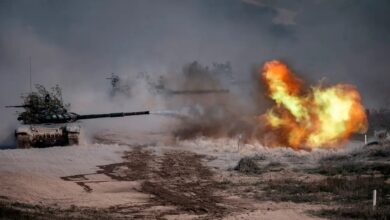

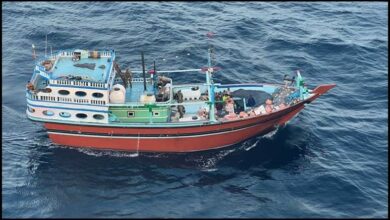
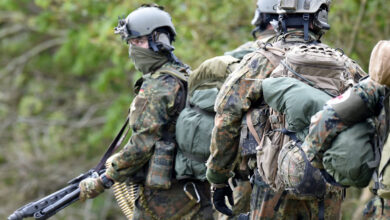
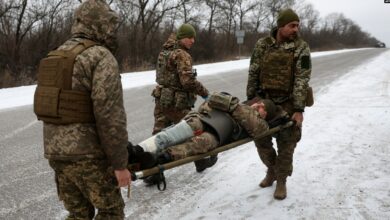

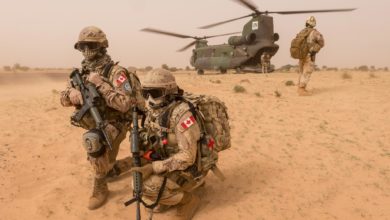

2 Comments